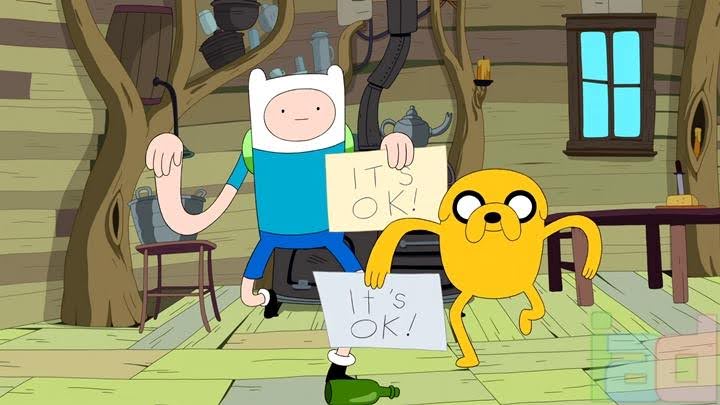
Introduction
In the competitive screenwriting world, think of a well-crafted and professional portfolio as your passport to many opportunities. A showcase of your skills, talent, versatility, and professionalism to industry professionals.
You may be looking to sell your script by attracting agents, producers or even collaborators. No matter your goal, a dynamic and exciting portfolio is essential!
But in an industry that’s ever-growing at a fast rate, how do you create an effective screenwriting portfolio? Plus, once you’ve compiled it, how do you ensure it stands out in an industry flooded with talent?
In today’s blog, we’ll guide you through every aspect of creating a top-notch screenwriting portfolio, from most-have materials to formatting best practices, where to submit it, and how Celtx can help you organize your work!

What is a screenwriting portfolio?
A screenwriting portfolio is a collection of a screenwriter’s best written scripts, showcasing their range, style, and abilities, used to attract potential agents, producers, and studios, essentially acting as a calling card to demonstrate their talent and secure professional opportunities in the film industry.
Why You Need a Screenwriting Portfolio
A screenwriting portfolio is more than just a collection of your scripts; it’s a strategic tool designed to present your best work in the most effective way possible. It has several key purposes. In no particular order, a screenwriting portfolio:
1. Demonstrates Your Writing Ability
Including your polished screenplays in your portfolio reflects your storytelling skills, grasp of structure, and character development prowess.
2. Showcases Your Versatility
You should select scripts from a range of genres and formats. This highlights your adaptability and broadens your appeal to different segments of the industry.
3. Provides a Professional Introduction
A well-organized portfolio, complete with a strong biography and personal statement offers readers a comprehensive introduction to who you are as a writer.
4. Makes You Competitive in Fellowships and Competitions
Many screenwriting contests and fellowships require script samples of your work. If you have a ready-to-go portfolio, you’ll make the application process a lot easier for yourself!
5. Prepares You for Industry Meetings
Whether you’re pitching to an agent, manager, or producer, having a professional portfolio on hand will help you look more prepared and credible.
Screenwriting Portfolio Must-Haves
As screenwriters, we are all different. However, there are certain elements to a screenwriting portfolio that are absolute must-haves! Here are our three top picks, alongside some tips on how you can maximize them.
Polished Feature/TV Pilot Scripts
Your portfolio should include at least one fully developed and polished feature length screenplay or TV pilot. As we mentioned above, you should ideally have multiple samples that showcase different styles or genres.One of the most prolific screenwriters on social media is Michael Jamin, a television writer who has worked on top shows such as Wilfred and Beavis and Butthead.

In this video titled “What Does a Portfolio Look Like?” he talks about the importance of having sample scripts that match a variety of tones. You never know when you could be asked to submit a script similar to a pre-existing project or one that’s currently in the works.
These scripts must be industry-ready, meaning they’ve undergone extensive revision, formatting checks, and professional feedback. Plus, ensure your scripts are all properly formatted to industry standards. Screenwriting software like Celtx or Final Draft are your best friends here!
But just how do you select the right scripts? First, go back to your roots as a writer and consider which of your screenplays best represent your voice and creative strengths. If possible, also look to include both a feature and TV pilot to show versatility.
Showcase your work like a pro.
Organize your projects with Celtx Script Writing Software
Loglines and Synopses
A logline is a one-to-two sentence summary of your script, capturing the essence of your story.
One up from a logline is a synopsis, a more detailed breakdown that provides an overview of the main plot, characters, and themes. This document is usually one-page.
Loglines and synopses matter hugely to your portfolio as they help industry professionals quickly assess whether they’re interested in a project. Agents and producers who are short on time will also often skim loglines before deciding to read a full script.
A Strong Bio and Personal Statement
Now it’s time for us to learn all about you! Your bio should include information about your background, writing experience, achievements, and career goals.
A personal statement expands on this, diving into your unique writer voice, your inspirations, and the types of stories you’d like to tell.
While it’s very easy (and tempting!) to tell our life’s story, make sure to keep these sections concise at one page or less. Highlight notable achievements such as contest wins and industry experience. Most importantly, show your personality to make your bio compelling and memorable!
For more on what you need to include in your screenwriting portfolio, Young Screenwriters have it covered:
Optional Elements (But Highly Recommended!)
If you feel your portfolio needs a little extra ‘pizazz’ then here are some extras you could include.
Lookbooks
These are visual representations of your project that convey tone, style and atmosphere. Usually created by a director with the overall vision in mind, it usually includes a director’s statement, plot, characters, cinematography, color, locations, potential visual effects, and editing.
You can also write a short section on why the project matters.
For more on lookbooks, check out this fabulous article from No Film School which breaks everything down perfectly.
Pitch Decks
Comprehensive presentations that outline your project’s concept, characters, and marketability.
One of the most famous pitch deck examples is the original deck from Adventure Time. This is a fantastic conveyance of the story world, its characters and visuals. Find it right here.

Treatments
Detailed narratives that provide an overview of your story, including key plot points and character arcs.
Stanley Kubrick’s original treatment for The Shining is a huge document, with a breakdown of each moment in the movie. But it’s a fantastic example of storytelling, scene breakdowns, and boiling a story down to its core, that we as screenwriters can all learn from! Read it in full here.

If you’re struggling to pull your portfolio together, there are services out there who will help you compile your work into a professional document.
Script Reader Pro’s Portfolio Creation Service boasts a team of expert screenwriters each with specialist genres.
How to Showcase Your Versatility
Demonstrating versatility in your portfolio can make you more attractive to a wider range of industry professionals. You’ll need a few strategies up your sleeve to make sure you stand out from the crowd.
1. Write in Multiple Genres
This is so important that we’re mentioning it again! Including scripts from different genres in your portfolio displays your ability to adapt your writing style and meet various storytelling demands.
2. Explore Different Formats
Feature films, television pilot, short films, and web series each have their own structures and requirements. Highlight your flexibility and range as a writer by including a variety of these formats in your portfolio.

3. Highlight Collaborative Projects
We say it a lot here on the Celtx blog – the film and television industries are all about collaboration! If you’ve co-written or contributed to collaborative projects, it’s crucial that you include them in your portfolio.
Be clear about the specific contributions you made and credit those you worked with as appropriate.
Best Practices for Formatting and Presentation
It goes without saying that after you’ve put all your hard work into writing your scripts and compiling all your supporting materials, you’ll want to present it in the best possible way.
A clean and professional presentation can significantly impact how your portfolio is received. Here are our best practices for creating the best-looking portfolio you can:
Professional Formatting
Ensure you adhere to industry-standard formatting for all your scripts. By showing you have strong attention to detail, you reflect your professionalism and respect for industry expectations.
Organized Structure
Arrange your portfolio in a logical order, grouping similar works together to ensure a reader can easily navigate it.
Proofread Thoroughly
Ensure that all the materials you include in your portfolio are free from grammatical errors and typos. Careless mistakes can detract from the quality of your work.
Visual Appeal
Incorporate visual elements, such as a clean layout and high-quality images to enhance the presentation of your portfolio. A visually appealing document can leave a lasting impression on executives, competition judges and anyone else who may read it.
Where & How to Submit Your Portfolio
Once you’ve finished your portfolio and ensured it’s polished to perfection, what do you do with it? Firstly, it’s important to regularly review your portfolio and keep it updated with any relevant new projects.
If you’re ready to send out your portfolio, there are a few avenues to consider when looking into submissions. It pays to be ready to send it out at a moment’s notice.
Screenwriting Competitions
Many screenwriting contests offer exposure and opportunities for emerging writers. Why not research reputable competitions on sites like FilmFreeway or Coverfly that align with your genres and style?


Fellowships
Screenwriting fellowships can provide mentorship, funding, and industry connections. Look for programs that support writers at your experience levels.
For our fellowship top picks, check out our dedicated Best Screenwriting Fellowships article.
Agents and Managers
A well-crafted portfolio is essential when seeking representation. But don’t send it out to every single agent you find online. Conduct careful and considered research into agents and managers who specialize in your genre and submit according to their guidelines.
Many agencies won’t accept unsolicited material, so definitely bear this in mind!
Related Reading: The 10 Best Screenwriting Agents and Agencies || Celtx Blog
Networking Events
It’s Celtx’s magic word – networking! Writing is a lonely pursuit at the best of times, so it can be tricky to meet likeminded creatives to share our ideas and projects with.
Of course, the continued development of online forums and communities is helping solve this problem. However, you should also attend industry events, workshops, and seminars in person to connect with writers, producers and directors like yourself. You never know what connections you could make, and how they’ll affect your career months and even years down the line.

How Celtx Helps You Prep & Organize Your Portfolio
Celtx is here for you from idea inception to final product! We can even help you in the preparation and organization of your screenwriting portfolio.
For your screenwriting needs, Celtx offers professional screenwriting software that ensures your script meets industry standards every single time.
As well as solo writers, this also worked for writing teams of any size. Our real-time collaboration tool keeps everyone on the same page and streamlines the process from start to finish.
Once you’ve finished writing, our story development tools and cataloguing system help you create lookbooks, pitch decks, and other supplementary materials for your portfolio.
If we haven’t convinced you to try Celtx, head on over to our website to find out more and start your free trial!
Conclusion
Creating a strong screenwriting portfolio is a vital step in establishing yourself in the industry. By curating a collection of polished scripts, engaging loglines, and a compelling personal statement, you demonstrate your talent and professionalism. Regularly updating your portfolio ensures it remains relevant and showcases your latest work.
Taking advantage of tools like Celtx can help streamline the process, keeping your projects organized and presentation ready.
Whether you’re submitting to competitions, seeking representation, or networking with industry professionals, a well-crafted portfolio can open doors and create opportunities. With dedication, strategy, and persistence, your screenwriting portfolio can be the key to unlocking your career aspirations. Good luck!
Turn ideas into screen-ready scripts.
Write with Celtx free and build your portfolio today.
Keep learning about screenwriting and the film industry with these articles from Celtx:
- How to Write a Killer Synopsis (and Why Your Script Needs One)
- The Write Stuff: Choosing the Best Screenwriting Software for Your Needs
- Film School Not Required: Best Online Screenwriting Classes and Resources
